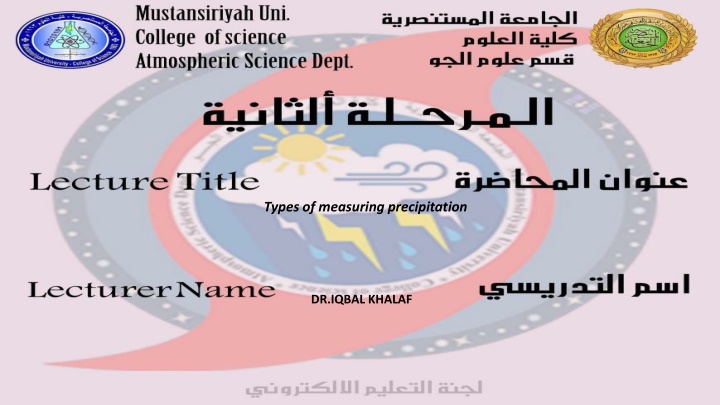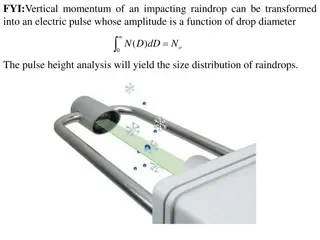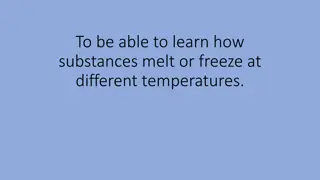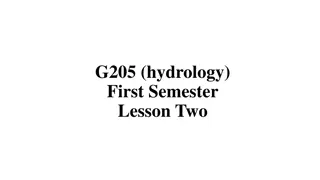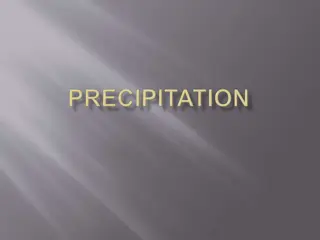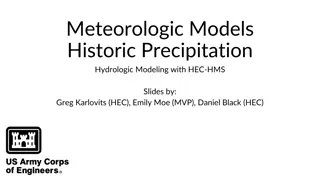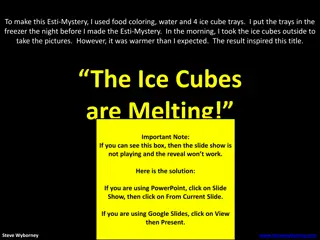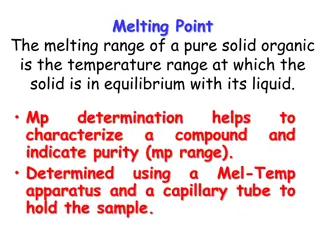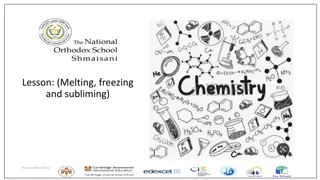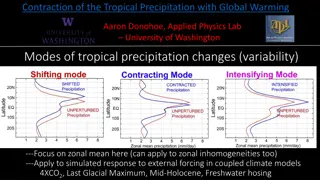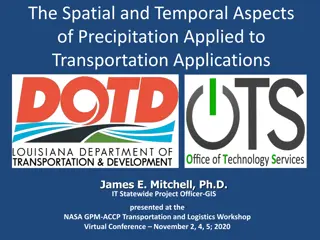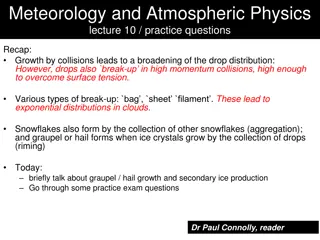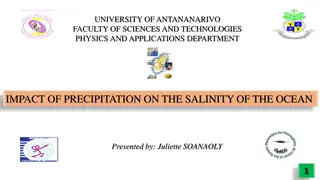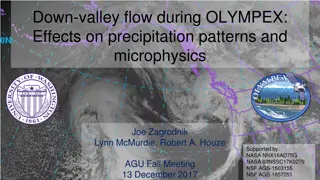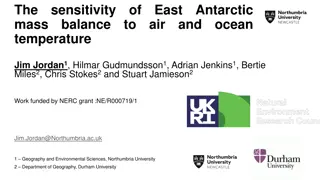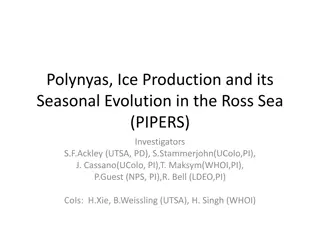Types of Measuring Precipitation and Efficient Ice Melting
This content discusses different types of measuring precipitation methods like Cylindrical Rain Gauges and Tipping Bucket Rain Gauges. It also explores snowmelt systems for preventing snow and ice build-up. Additionally, it covers the two broad types of snowmelt systems based on heat sources and their operational efficiencies. The use of automatic activation devices and high limit thermostats for optimal energy consumption is highlighted. Overall, the content emphasizes the importance of efficient precipitation measurement and ice melting techniques for safety and maintenance.
Download Presentation

Please find below an Image/Link to download the presentation.
The content on the website is provided AS IS for your information and personal use only. It may not be sold, licensed, or shared on other websites without obtaining consent from the author.If you encounter any issues during the download, it is possible that the publisher has removed the file from their server.
You are allowed to download the files provided on this website for personal or commercial use, subject to the condition that they are used lawfully. All files are the property of their respective owners.
The content on the website is provided AS IS for your information and personal use only. It may not be sold, licensed, or shared on other websites without obtaining consent from the author.
E N D
Presentation Transcript
Types of measuring precipitation DR.IQBAL KHALAF
Types of measuring precipitation Types of measuring precipitation There are many types of measuring precipitation :- Cylindrical Rain Gauges Ordinary Rain Gauges Siphon Rain Gauges Tipping Bucket Rain Gauges Tipping Bucket Rain Gauge Recorder Exposure Windshields Precipitation calculations:- There are different ways to calculate the amount of precipitation for a certain area:- Arithmetic Mean Method Thiessen Average Method Isohyetal Line Method Triangulation method Balance method
ICE MELTING ICE MELTING Ice and snow melting A Snowmelt system prevents the build-up of snow and ice on walkways, patios and roadways, or more economically, only a portion of the area such as a pair of 2-foot (0.61 m)- wide tire tracks on a driveway or a 3-foot (0.91 m) center portion of a sidewalk, etc. They function even during a storm thus improve safety and eliminate winter maintenance labor including - 1 shoveling or plowing snow 2- spreading de-icing salt 3- traction grit (sand). A snowmelt system may extend the life of the concrete, asphalt or under pavers by eliminating the use salts or other de-icing chemicals, and physical damage from winter service vehicles.
Systems are available in two broad types based on heat source: - 1 electric resistance heat - 2 heat from a combustion or geothermal source delivered hedonically (in a fluid). Arguably, electric snowmelt systems requires less maintenance than hydro snowmelt systems because there are - 1 minimal moving parts - 2 no corroding agents. - 3 However electric snowmelt systems tend to be much more expensive to operate. Most new snowmelt systems operate in conjunction with an automatic activation device that will turn on the system on when it senses precipitation and freezing temperatures and turn off the system when temperatures are above freezing.
These types of devices ensure the system is only - 1 active during useful periods - 2 reduces wasteful energy consumption. A high limit thermostat further increases efficiency when installed in conjunction with the automatic snow melt controller to temporarily disable the system once the slab has reached a sufficient snow melting temperature. Some building codes require the high limit thermostat to prevent energy waste. Though their total environmental impact depends on their energy source. Current systems are more cost effective in the long run than continual salt dumping and removal, and reduce waste by extending the life of the concrete
Snow conversion Snow conversion When the temperature is around 30 degrees, one inch of liquid precipitation would fall as 10 inches of snow assuming the storm is all snow. But, the amount of moisture in each snowflake differs depending on the temperature changing the snow to rain ratio For example, our big December snowstorm occurred with temperatures closer to 25 degrees. During that storm the snow ratio was closer to 15 inches of snow to one inch of rain. We had 1.75 inches of "liquid equivalent," yet ended up with 23.2 inches of snow, not 17.5 inches of accumulation.
Melting processes Melting processes It happens every year, with the beginning of the warmer spring the snow in the mountains starts to melt. To understand the physics during the snow melt you just have to look at your lawn after a rain. The water source is different but the result is the same. Forced by gravity the water is pulled to the ground. At first, the dry ground is able to absorb the water, holding it in its upper layers. After a while the ground gets saturated and unable to bind the water. At this point you would recognize the building of puddles in your lawn. For the mountain region this means that the water starts to flow towards the deepest point. This happens at about 10 to 15 cm below the surface, just below the roots of the low vegetation. I don't get further into the physics of that but you may easily see this by pulling up a square of grass including its roots and surrounding ground. The flow of water is slow but steady facing a high resistance. Only if the supply of water is larger than the subsurface flow can carry, the water will flow on the surface. The water eventually will end up in a creek or stream and gets carried it away. The following stages apply for the
